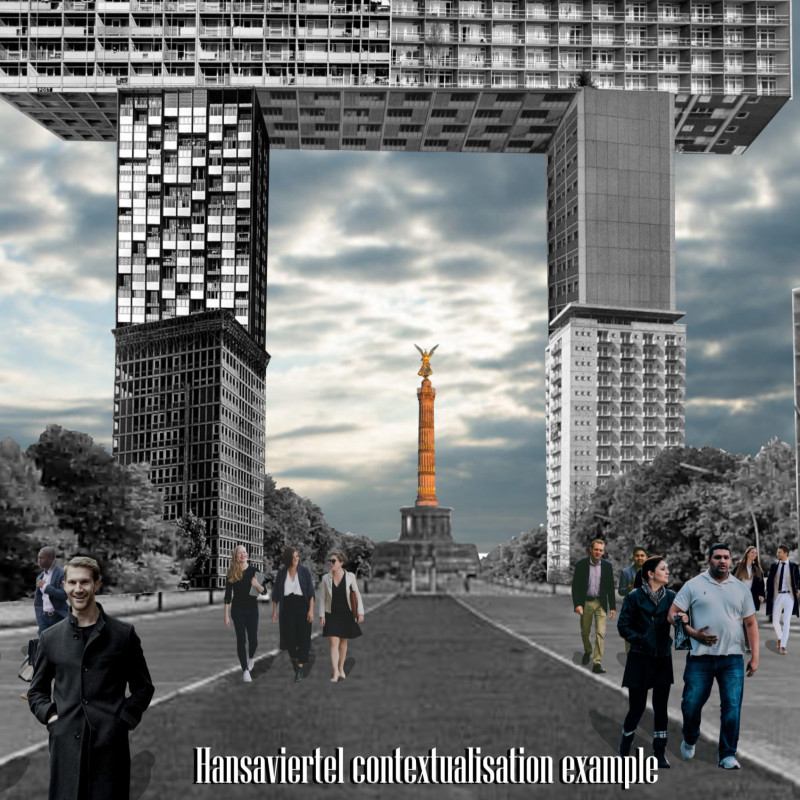5 key facts about this project
The "Speculation's Triumphal Arch" serves as a meaningful addition to Berlin's landscape, directly addressing the city's ongoing housing crisis. Positioned prominently in urban areas, it stands as a monument that highlights the struggles communities have faced due to speculative real estate practices. The design aims to promote a sense of ownership among residents while marking an end to a significant chapter in their history, commonly referred to as the "housing war."
Conceptual Framework
The project is founded on the idea that speculation has significantly impacted urban life. The arch is designed as a stacked formation of typical housing buildings, each symbolizing the past vulnerabilities experienced during the crisis. This unique arrangement creates a strong visual impact, one that captures the community's resolve to reclaim urban space and assert their identity once more.
Integration with Historical Context
Strategically located in areas such as Hansaviertel, Karl-Marx Allee, Schöneberg, and Kreuzberg, the arch connects with the city’s rich architectural and cultural history. By situating itself within these districts, the design acknowledges the existing narratives embedded in them. This context deepens the relationship between the structure and local residents, enhancing their sense of belonging and connection to the space.
Materiality and Structural Considerations
While specific materials are not detailed in the presentation, the design suggests careful thought about material choices that fit the historical context of Berlin. Visualizations imply a strong construction approach, likely using traditional materials familiar to the city’s architectural style. This consideration of materials is an important aspect, as it adds to both the physical stability of the arch and its symbolic significance.
Visual and Social Dynamics
The stacked housing units not only serve as building elements but also reflect resilience and reclaiming of identity by the community. The arch invites viewers and residents alike to engage with its presence in the urban environment. It encapsulates the ongoing efforts to navigate complex social and economic challenges, encouraging a shared goal of sustainable living and strong community ties. The structure ultimately stands as a reminder of the journey taken by the residents, marking a hopeful future for their neighborhoods.



















































